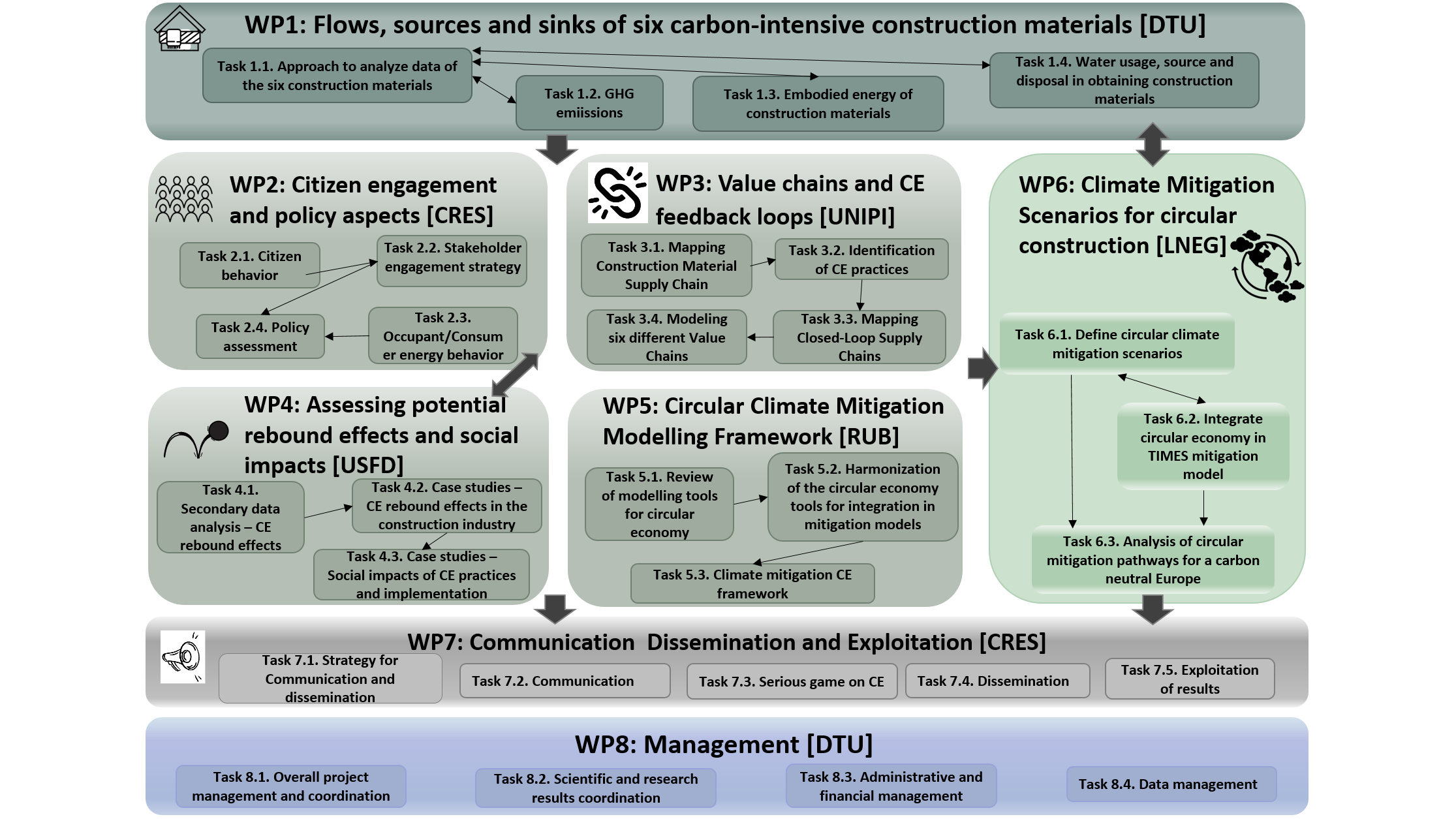Work Packages
The tasks of the consortium are eight work packages (WP)

WP1: Flows, sources and sinks of six carbon-intensive construction materials
The main objective of WP1 is to build a dedicated, holistic dataset combining stocks, flows, and cycles along with the production of six carbon-intensive construction materials - cement, steel, wood, brick, glass, and insulation materials.
WP1 lead: DTU
WP2: Citizen engagement and policy aspects
WP2 will develop a strategy to quantify citizen behavior and key stakeholder opinion about circular economy measures of six construction materials and incorporate its results in TIMES climate mitigation model. In addition, WP2 will aim to engage citizens and key stakeholders and take their feedback into account. It will work in tandem with WP6 to develop climate mitigation scenarios for circular construction, ensuring citizen engagement throughout the process.
WP2 lead: CRES
WP3: Circular economy practices and supporting systems
WP3 aims to understand the main circular economy practices in the value chains for the six selected carbon-intensive materials. This is necessary to determine which entities (e.g.,Supply Chains, Value Chains, material, and information flow, transformation processes) are affected by circular economy
WP3 lead: UNIPI
WP4: Assessing potential rebound effects and social impacts
WP4 aims to quantify potential rebound effects linked to the implementation of CE measures in the life-cycle of six carbon-intensive construction materials. WP4 allows understanding of the potential side-effects linked to the performance of CE, which might lead to counterintuitive outcomes in terms of resource utilisation and climate mitigation strategies.
WP4 lead: USFD
WP5: Circular climate mitigation modelling framework
This WP aims to design a conceptual model/framework for integrating CE into climate mitigation models. It will combine the functionalities of existing CE analytical tools with the needs and functionalities of climate mitigation models to develop the proposed conceptual framework.
WP5 lead: RUB
WP6: Circular climate mitigation scenarios
This work package aims to implement the CO2NSTRUCT framework to quantify circular economy’s potential contribution to climate goals. The synergies and antagonisms between CE and climate mitigation pathways towards carbon neutrality will be quantified.
WP6 lead: LNEG
WP7: Communication, dissemination and exploitation
The main objective of WP7 is to ensure the project's communication and the dissemination and exploitation of its outcomes and results.
WP7 lead: CRES
WP8: Management
To ensure that the project meets its objectives within the time resources identified in the WPs to support the monitoring and evaluation of results to ensure the wanted impact and minimize risks.
WP8 lead: DTU